
In the idyllic setting of Hameau de la Reine, Marie Antoinette and her companions indulged in a picturesque version of pastoral life. Dressed as milkmaids, they romanticized rural labor, a stark contrast to the grueling work performed by the peasants they employed.
Today, we find a modern counterpart in the tradwife movement. Influencers celebrate a return to intensive domestic tasks, crafting an idealized vision of homemaking. However, just like the French Queen, these modern-day homemakers often rely on hired help for the bulk of household duties. Employing a gardener, a nanny, and a housekeeper affords them time to focus on their domestic life’s highly curated and performative aspects.
Then, like today, cosplaying as a domestic laborer during periods of economic distress presents a troubling disconnect. Crafting this idealized domestic façade inadvertently highlights a lack of awareness and sensitivity to the economic struggles of their times. While they play at simpler lives, real economic hardships continue to affect the majority who cannot afford the luxury of pretending.
This dissonance appears tone-deaf and risks trivializing the genuine challenges faced by those who perform such labor out of necessity rather than choice. This historical and contemporary parallel is a stark reminder of the potential consequences of such disconnects.
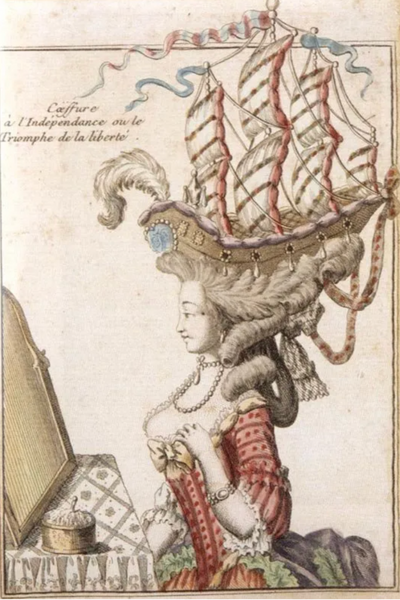
Who Was Marie Antoinette?
When the Austrian Princess Marie Antoinette arrived at Versailles, she was just 14. It is important to note that she faced impossible odds from the start. After arriving in France, she immediately stepped into a role expected to reflect the culture of opulence that had long defined the French court. Like any 14-year-old, she embraced this extravagance, adopting lavish spending habits and a luxurious lifestyle. However, her Austrian heritage did little to win the French Nobility’s and the people’s favor. Years of drawn-out wars with Austria had placed a target on her back well before she arrived at Versailles.
Her role in popularizing trends heightened her visibility, leading critics to attack her personal life. They saw her as a convenient scapegoat for France’s issues, with rivals blaming her for nearly every problem. Thus, her public persona became that of a spendthrift queen out of touch with her subjects. But did they have a point?
To escape from the rigid formality of the palace and the high expectations her position carried, her husband, King Louis XVI, gifted her the estate of Trianon. This estate within Versailles includes the Grand Trianon and Petit Trianon palaces, the Queen’s Hamlet, and several ornamental gardens. Many historians claim that it was how she spent her time in this estate that had the French people demanding her head at the start of the French Revolution.

Escaping the Pressures of the Palace
Under Marie Antoinette’s direction, builders constructed the Hameau de la Reine to evoke Normandy’s rural lifestyle. Here the Queen adopted a highly romanticized version of the simplicity and rustic beauty of country living.
Marie and her friends indulged in the picturesque rural fantasy. This included putting on plays in which they held roles, such as shepherdess and milkmaid. The Queen often donned simple yet stylish pastoral garb, orchestrating these elaborate role-playing games to mimic her idealized pastoral life. Meanwhile, she employed a peasant family to do the actual farming duties.
Although Marie Antoinette saw these activities as an innocent escape, the public perceived them as out-of-touch and frivolous. It fueled criticism as tensions in France escalated toward revolution. Thus, the Hameau became a symbol of the Queen’s perceived detachment from the harsh realities faced by her subjects.

France’s Economic Position in the Late 1700s
First, to understand the social division at this time, you need to understand how the French class system was structured. It was made up of three estates. The First Estate was the Clergy. While lower-class people were allowed to join this Estate, any real position of power, influence, or comfort was appointed. (AKA, your Daddy had to know a guy.)
The Second Estate was the French Nobility. This estate comprised old money, those whose great-great grandfathers had fought with the king back when kings fought, and the new money who had bought their way into nobility.
Then there was everyone else, the Third Estate. The estate was by far the largest but controlled the least wealth and land. They also bore the entirety of the nation’s tax burden. These taxes supported a heavily indebted government and had been accumulated by extravagant spending by the monarchy and costly involvement in foreign wars, such as The American Revolution. They also covered living allowances for the nobility that lived at Versailles.
The once-great French monarchy was now out of money. Each time the Monarcy brought in a financial advisor, they said one thing: Tax the nobility. Each time, the nobility refused, claiming they couldn’t afford it. (It’s important to note, that Marie Antoinette supported the nobility’s claim.)
Meanwhile, bread became scarce due to poor harvests in the late 1780s, notably in 1788. This shortage drove prices to exorbitant levels, far outpacing the stagnant wages of everyday workers. As a result, families struggled to afford necessities, plunging them deeper into hardship. Simultaneously, inflation soared, further diminishing the average citizen’s purchasing power. At one point, the price of one loaf of bread cost half of the average citizen’s weekly income.
These factors fueled an overwhelming sense of injustice and resentment toward the aristocracy. Eventually, they resulted in radical social and political upheaval, ultimately leading to the French Revolution.
Read the Room, Marie Antoinette.
In this climate of economic hardship and social unrest, Marie Antoinette’s decision to engage in pastoral cosplay at the Hameau de la Reine appeared tone-deaf. As the French populace grappled with the realities of famine and financial strain, the Queen’s theatrical escapades in her curated peasant village seemed to mock the genuine struggles of her subjects.
Her lavish expenditures on the Hameau starkly contrasted with the dire conditions outside the palace walls. This insensitivity deepened the existing resentment towards the monarchy and reinforced the perception of Marie Antoinette as an aloof and out-of-touch figure.
This image, culminating in the infamous but apocryphal “Let them eat cake” anecdote, became emblematic of the widespread discontent that fueled the revolutionary fervor. Thus, Marie’s actions at the Hameau, intended as harmless diversions, inadvertently symbolized the vast disconnect between the monarchy and the harsh realities faced by the French people, escalating the push toward revolution.
Perhaps it was this animosity that caused the French Revolutionaries to find Marie Antoinette guilty of treason. Her husband, the King, had already been put to death, and it was in his position that the French government had centered all of its power. He was the absolute monarch, not her. While she had been influential, she held no power, and yet it was her head the people had called for when they stormed the palace.
Marie’s story highlights the power of appearances and our social responsibility when in a position of influence and power.
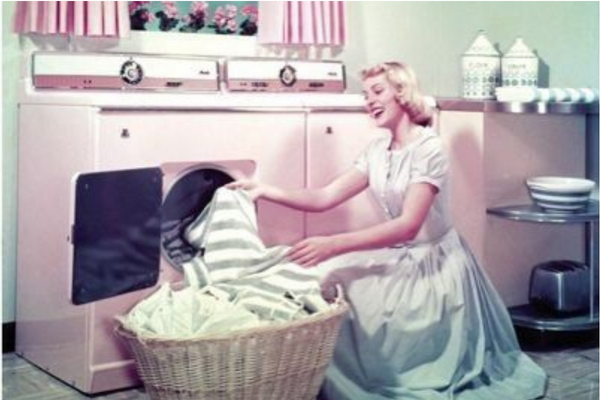
Today’s Tradwife Influencer: 1950s Cosplay?
Once, while deep in the scroll cycle, I saw an influencer happily cutting each hole in each cheerio she had made from wheat she had freshly ground that morning. Her voiceover blissfully explained the arrival of wheat she had sourced from Europe. She gently explained that while her work might seem over the top, she couldn’t give her children what was readily available on American shelves because she loved them.
This scenario typifies the tradwife influencer movement—a return to intensive, often glorified domestic tasks under the guise of “traditional” homemaking. Tradwife influencers promote a nostalgic vision of domesticity, where women primarily define themselves through their roles as homemakers and caregivers. This ideal often involves elaborate cooking, meticulous home care, and crafting, all shared across social media platforms to inspire or instruct like-minded followers.
However, beneath the surface of these picturesque domestic scenes lies a complex layer of privilege and performance. Many tradwife influencers can dedicate time to these tasks because they have the economic means to outsource the less desirable aspects of home management. Their content does not fully acknowledge the realities of most women, for whom such a lifestyle is neither feasible nor desirable due to economic and practical constraints.
The tradwife movement, while resonating with some for its embrace of family and home-focused values, also faces criticism for its potential to ignore broader socio-economic issues affecting women today.
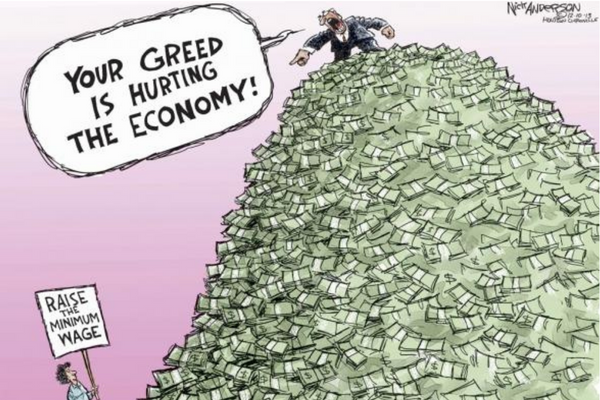
Tradwife-ing, in this Economy?
Today, economic inequality is severe, much like in 18th-century France. In the US, the top 10% of earners control more wealth than the combined assets of the bottom 90%. The disparity grows even more at the very top, where the wealthiest 0.1% hold around $20 trillion, compared to the $3.7 trillion held by the bottom 50%. This immense wealth gap highlights a significant issue in the distribution of economic resources.
Additionally, the federal minimum wage has been static at $7.25 per hour for years, failing to keep up with the cost of living. This stagnation makes it difficult for low-wage workers to maintain a basic standard of living, primarily as corporate profits, often under the guise of inflation, drive up prices for essentials like food, housing, and healthcare. The combination of these factors means that lower-income households experience a decreasing purchasing power, deepening the economic divide.
It Wasn’t Okay Then, and It Isn’t Okay Now.
The performative domestic labor showcased by tradwife influencers feels increasingly disconnected from the lived experiences of many Americans today. Amidst widespread economic challenges, the image of a serene, financially carefree homemaking lifestyle promoted by these influencers appears out of touch. Most families face the necessity of dual incomes to secure even the most basic level of economic stability, making the traditional single-earner household model largely impractical as idealized by tradwife influencers.
Furthermore, the static nature of minimum wages and the constant uptick in living costs add layers of economic pressure that this idealized lifestyle fails to acknowledge. For many, the reality involves juggling multiple jobs, managing escalating bills, and dealing with the ever-present worry of financial insecurity. This disconnect highlights a gap in understanding and relatability and risks alienating those who struggle daily to make ends meet.
By promoting a model of domestic life that is unattainable for the majority, tradwife influencers overlook the critical financial realities that shape the lives of their viewers, rendering their content unrealistic and insensitive to the broader economic context.
(Just a quick tangent: Shaming mothers is never a good look. Society requires most mothers to work as if they have no children and then raise children as if they have no job. What asshole would imply failure if they weren’t also making homemade Cheerios? A fucking clown. Statistically, 65% of those Cheerios go directly to the floor. Source: watching my niece eat. )
Deepening the Social Divide
Promoting unattainable lifestyles can deepen societal divides. The tradwife movement, much like Marie Antoinette’s idyllic retreats, showcases a stark disconnect from everyday struggles. Both represent an idealized domestic life that ignores most people’s economic realities. In 2024, with rising inequality, stagnant wages, and inflation, most families need dual incomes to survive, making the single-earner model promoted by tradwife influencers unrealistic.
This disconnect appears out of touch and risks alienating their audience, reminiscent of how detached Marie Antoinette seemed before the French Revolution.
Related Reading
Why You Should Drink ‘Til It’s Blurry At Monet’s Garden
11 Paris Travel Essentials and How to Pack Like a Parisian
Get Lost In Lost Generation Territory of Paris
3 Reasons to Fall in Love With Parisian Cafe Culture
12 Powerful Books to Make You Fall in Love with Paris

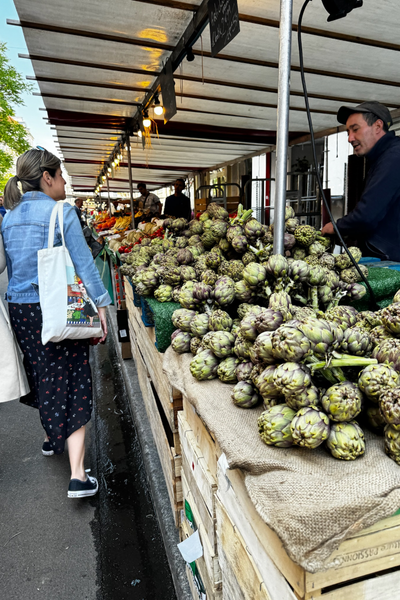


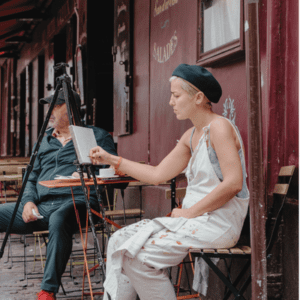

Calling out half of Instagram in one article! Well articulated, brutally honest, and refreshingly well played!
(Just a quick tangent: Shaming mothers is never a good look. Society requires most mothers to work as if they have no children and then raise children as if they have no job. What asshole would imply failure if they weren’t also making homemade Cheerios? A fucking clown. Statistically, 65% of those Cheerios go directly to the floor. Source: watching my niece eat. )
My favorite line! Although there were many throughout, this one really resonated with me most. Love it!